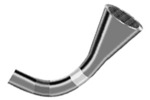- ▶
- Heaters/Source
- ▶
- Agilent Heaters and SensorsMass Spectrometry, Scientific Supplies & ManufacturingScientific Instrument Services 5973 Source Heater Tamper Resistant Allen Wrench 5973/5975 Quad Sensor 5985 Source Heater Assembly Agilent Interface Heater Assembly 5971 Interface Heater

- ▶
- MultipliersAgilent/HP Amptek Anelva Bear BioRad/Ciphergen Bruker Cameca Comstock CVC 1100 Dune DuPont Extrel FEI GBC Griffin Hiden Hitachi Inficon(Balzers/Leybold) JEOL LKB Mass Analyzer Products Mass Sensors McCallister Nermag Nu Inst Orbital Omicron PerkinElmer Riber Sciex/AB Seiko Sensar Shimadzu (Kratos) Standford Teledyne Thermo/Finnigan Ulvac UTI/MKS Vacuum Tech Varian Vestec Viking Waters/Micromass/VG Generic Catalog Page A40 Catalog Page A41 Catalog Page A42 Catalog Page A43 Catalog Page A36

- LiteratureApplication Notes Adsorbent Resins Guide Mass Spec Tips SDS Sheets FAQ MS Calibration Compound Spectra Manuals MS Links/Labs/ Organizations MS Online Tools Flyers on Products/Services Scientific Supplies Catalog About Us NextAdvance Bullet Blender® Homogenizer Protocols Micro-Mesh® Literature Instrumentation Literature Agilent GC/MS Literature SIS News / E-Mail Newsletter NIST MS Database - Update Notifications

- ▶
- Mass Spec Tips1 - Freon for use in Mass Spectrometer Leak Checking 2 - Mass Spectrometer Probe Cooling 3 - Sample Vials for Direct Probes 4 - Selection of Vacuum Pump Oils for Lowest Mass Spec Background 5 - Determination Linkages in Biomolecules of Disulfide 6 - Transfer of H.P. ChemStation MS and GC Chromatograms from PC to MAC Computer 7 - Repairing Clogged Thermospray Probes 8 - Tuning a Finnigan 5100 to Meet BFB or DFTPP Criteria 9 - H.P. 5971 Transfer Line Tip for Direct Introduction of Capillary Column 10 - Troubleshooting Finnigan 5100 GC/MS Systems 11 - Leak Checking Mass Spectrometers 12 - Elimination of Memory Peaks and GC Background Noise 13 - SuperIncos Mapped Software Print Buffer Lockup 14 - Reduction of Peak Tailing 15 - Electron Multiplier Sensitivity 16 - INCOS Procedure for Calibrating on the Finnigan 4500 17 - Extending Electron Multiplier Life 18 - What techniques or methods do you use to determine if the electron multiplier 19- What techniques or methods do you use to detect vacuum leaks in your mass spectrometer 20 - Extending Lenear Range of the Mass Spec Article - Improving Sensitivity in the HP 5971 Mass Spectrometer - Part 1 and Part 2

- ▶
- 17 - Extending Electron Multiplier Life (This Page)
 Mass Spec Tips is a collection of tips relating to the operation
and service of mass spectrometers. Some of these Tips have been
reported in our newsletter, "The Mass Spec Source."
If you have a question relating to the operation or service of
mass spectrometers or would like to add your comments to the below
tip and would like to have it included in this forum, please contact us.
Input to this database of MS Tips is needed from our readers
to complete this section.
Mass Spec Tips is a collection of tips relating to the operation
and service of mass spectrometers. Some of these Tips have been
reported in our newsletter, "The Mass Spec Source."
If you have a question relating to the operation or service of
mass spectrometers or would like to add your comments to the below
tip and would like to have it included in this forum, please contact us.
Input to this database of MS Tips is needed from our readers
to complete this section.
by John J. Manura,
Scientific Instrument Services
Electron multiplier life is dramatically effected by its operating environment. Vacuum level, pressure surges, solvent plugs and air plugs all can drastically reduce multiplier life. In our labs we have two H.P 5971 instruments, in which we have increased multiplier life to greater than 2 years. This compared to the normal operation by most users of 9 months to 1 year for electron multiplier life. We have accomplished this increased life by two means.
First, we replaced the original small rotary vacuum pumps on the instrument with larger Alcatel pumps. On one instrument we installed an Alcatel Model UM2010 (200 l/min) and on the other instrument we installed an Alcatel Model UM2015 (300 l/min). The original rough pumps supplied with the mass spectrometer had a pumping capacity of 90 l/min or less. We also replaced the vacuum pump oil with a new lower vapor pressure oil (Inland 45). Both of these changes result in better vacuum and quicker pumping out of the mass spectrometer. Since the MSD is not differentially pumped, every improvement in vacuum performance helps increase multiplier life and also filament life.
The second thing we do differently, is that nearly all of our samples are analyzed using our thermal desorption system. Therefore no solvent slugs are introduced into the mass spectrometer. If we need to inject a sample with a solvent front, we first inject it onto a Tenax® TA trap, then purge off the solvent front before desorbing the sample into the mass spectrometer. In many cases this is not practical, but it points out that solvent slugs and large sample pressure surges can reduce both multiplier as well as filament life. Solvents slugs should be kept to a minimum, and the mass spectrometer (and therefore the multiplier) should not be turned on until the solvent slug has pumped out of the system. Likewise sample overloading and the introduction of air can also reduce multiplier life.
As a result of these improvements in the vacuum system and the injection techniques that we use in our lab, we have never had a multiplier last less than 2 years. In addition we rarely burn out a filament. In most cases we need to shut down the mass spectrometer to clean the source or change columns before the filament burns out.

